Sushi, a dish deeply intertwined with Japanese culinary heritage, isn't a monolithic experience. For centuries, regional variations have flourished, each boasting distinct techniques, ingredients, and philosophies. While often associated with delicate and refined presentations, the core concept – vinegared rice paired with seafood or vegetables – has been adapted and perfected across the country. This divergence leads to incredibly diverse styles, from the intensely rich sushi of Hokkaido to the more delicately layered creations of Tokyo. Understanding these regional differences unveils a profound appreciation for the artistry and dedication involved in crafting this iconic dish. This exploration will delve into three of the most recognized regional sushi styles: Hokkaido, Kansai, and Tokyo, revealing what makes each so unique and why they hold such a revered place in Japanese cuisine.
The pursuit of umami – that savory, almost meaty flavor – is a central thread connecting all sushi styles, but the methods of achieving it vary greatly. Regional specializations arise from local availability of ingredients, historical customs, and the individual preferences of sushi chefs. The subtle nuances in rice preparation, the selection of fish, and the way the ingredients are combined all contribute to the characteristic feel and taste of sushi from each area. Let’s journey into the specific characteristics that define each of these celebrated styles.
Hokkaido Sushi: The Land of the Arctic Salmon
Hokkaido sushi, known as Kai-narezushi (literally "sea bream marinated in the sea"), stands apart due to its unique preparation. Rather than using vinegar like other styles, Hokkaido sushi employs a brine made with seawater, soy sauce, sake, and ginger – a narezushi method. This creates a profoundly intense, almost fermented flavor profile. The fish, typically bluefin tuna or sea bream, is heavily salted and then aged for several months, sometimes even years, in straw mats. This lengthy curing process dramatically alters the texture and taste, resulting in a dense, chewy bite with an incredibly powerful umami punch. It's a bracing, assertive flavor that reflects the raw, rugged environment of Hokkaido.
This method’s longevity is absolutely key. The preservation techniques, adopted from Korea centuries ago, weren’t just about survival; they shaped the flavor. The combination of salt and fermentation truly concentrates the flavors of the fish, creating something far more potent than fresh sushi. Furthermore, because of the aging process, the texture is quite distinct - it offers a satisfying chew that is unlike the melt-in-your-mouth texture of more contemporary styles. Hokkaido sushi isn't for the faint of heart; it’s a bold, unforgettable experience that showcases a deeply rooted culinary tradition.
The taste is often described as ‘oceanic’ – intensely reminiscent of the sea, carrying a salty, slightly fermented, and surprisingly complex character. It’s a taste that demands attention, and it’s one that speaks to the resourcefulness and enduring spirit of the people of Hokkaido. Nowadays, while narezushi remains a significant part of the heritage, many chefs blend it with more contemporary techniques to create a range of Hokkaido sushi styles, balancing tradition with innovation.
Kansai Sushi: The Elegance of Edomae
Kansai sushi, originating in Osaka and Kyoto, is renowned for its emphasis on presentation and the meticulous handling of ingredients. Commonly referred to as Edomae sushi (derived from Edo, which is now Tokyo), it’s a testament to the influence of the port city and its access to fresh seafood. Edomae sushi focuses on showcasing the natural beauty and flavor of the fish, often utilizing a technique called neta-shū, where the chef lightly seasons the fish with soy sauce and grated citrus peel to enhance its innate taste.
Unlike Hokkaido’s aggressive preservation, Edomae sushi embraces freshness and relies heavily on the skillful manipulation of the fish's natural qualities. The emphasis is on letting the ingredients speak for themselves, guided by the chef's discerning palate. The rice, prepared with a moderate amount of vinegar, complements the fish without overpowering it. The use of katsuobushi (dried bonito flakes) is also a hallmark, adding a subtle smoky aroma and visual appeal. Many traditional Edomae sushi restaurants historically utilized a charcoal-burning hibachi (grill) to finish the fish, imparting a unique smoky flavor.
The artistry extends beyond just the taste; it’s about creating a harmonious visual experience. The selection of seasonal ingredients, the precise arrangement of the fish on the rice, and the careful placement of garnish—like a single sprig of shiso—all contribute to a meticulously composed work of art. Kansai sushi represents a level of refinement and attention to detail that truly elevates the sushi experience, valuing balance and aesthetics alongside flavor.
Tokyo Sushi: The Delicate Symphony of Otoro

Tokyo sushi, particularly that focused on otoro (fatty tuna belly), is celebrated for its refinement and subtle, nuanced flavors. Following the innovations pioneered by Hanaya Yohei in the late 19th century, Tokyo sushi built upon the Edomae style, but with a greater emphasis on using a charcoal-lined hibachi to sear the fish briefly before serving. This imparts a delicate, smoky flavor to the otoro, enhancing its natural richness without masking it.
The key to Tokyo’s otoro sushi lies in the careful balance between searing and preserving the fish’s inherent qualities. The short sear creates a beautiful crust that melts in the mouth, releasing a burst of flavor. The rice, prepared with a slight sweetness and a generous amount of awasezu (a diluted soy sauce mixture), provides a counterpoint to the richness of the otoro. Presentation is crucial, with meticulous attention paid to the arrangement of the fish and the selection of complementary garnishes like grated daikon radish and ginger.
The exceptional quality of otoro is a significant factor in Tokyo’s reputation. The ability to source and prepare this prized cut of tuna to perfection is a hallmark of the city’s sushi scene. The results are truly remarkable—a melt-in-your-mouth experience that’s both intensely flavorful and surprisingly delicate. Tokyo sushi embodies a pursuit of harmony and precision, showcasing the chef’s mastery of technique and a deep respect for the ingredients.
Regional Variations Within Styles
It's important to acknowledge that even within these three major regional styles, significant variations exist. Within Kansai sushi, for example, you'll find distinct differences between Osaka’s emphasis on bold, umami-rich flavors and Kyoto's more delicate approach. Similarly, Hokkaido sushi encompasses a range of techniques, from traditional narezushi to more modern interpretations incorporating fresh ingredients. The evolving nature of sushi reflects the dynamism of Japanese cuisine.
Furthermore, modern sushi chefs continually experiment and innovate, blending traditional techniques with new ideas. The use of different types of vinegar, the introduction of new ingredients, and the exploration of novel presentation styles are all part of the ongoing evolution of sushi. This dynamism ensures that sushi remains a vibrant and exciting culinary tradition, capable of adapting to changing tastes and incorporating new influences while retaining its core principles.
Conclusion
Exploring the regional sushi styles of Hokkaido, Kansai, and Tokyo reveals a fascinating story of cultural adaptation and culinary innovation. Each style represents a unique interpretation of the fundamental principles of sushi, shaped by local ingredients, historical influences, and the individual vision of the sushi chefs. From the intensely flavored narezushi of Hokkaido to the delicate and refined otoro sushi of Tokyo, these regional variations demonstrate the incredible diversity and depth of Japanese cuisine.
Ultimately, appreciating the differences between these styles enriches the overall sushi experience. It encourages a deeper understanding of the art and craft involved in creating this iconic dish, highlighting the dedication of the chefs who have preserved and perfected these traditions for generations. Whether you’re savoring the assertive flavors of Hokkaido or the subtle elegance of Tokyo, you’re participating in a living culinary legacy.
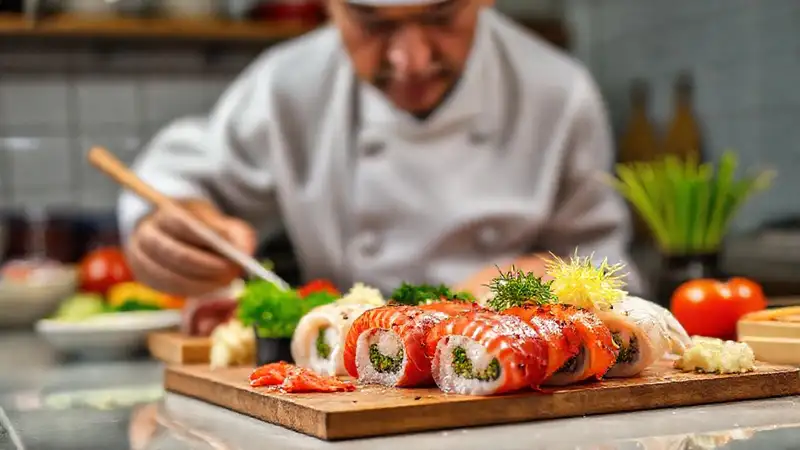 How do you replicate authentic Japanese sushi flavors
How do you replicate authentic Japanese sushi flavors How does Kansai sushi relate to local markets
How does Kansai sushi relate to local markets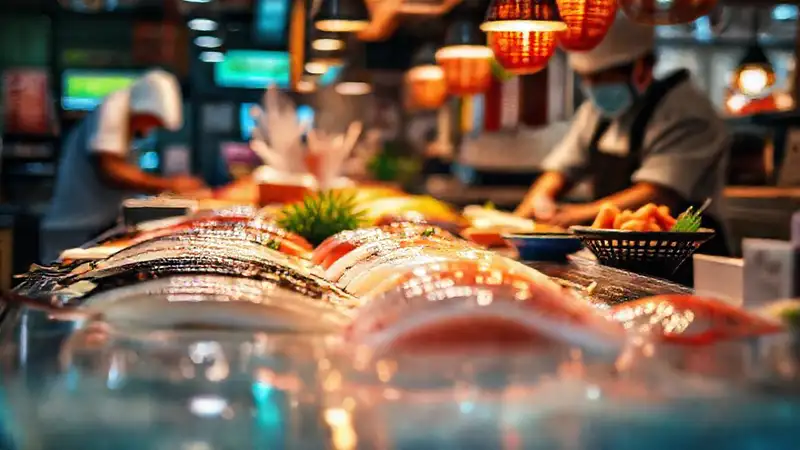 How does Tokyo’s sushi emphasize freshness, always
How does Tokyo’s sushi emphasize freshness, always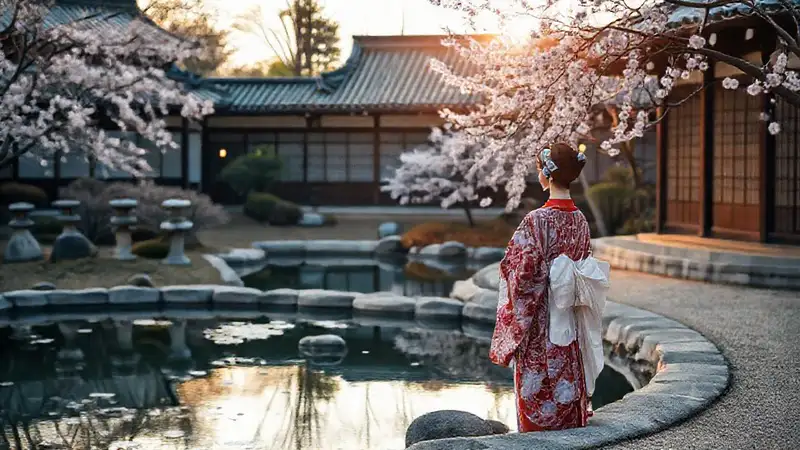 How does Kansai’s presentation prioritize beauty
How does Kansai’s presentation prioritize beauty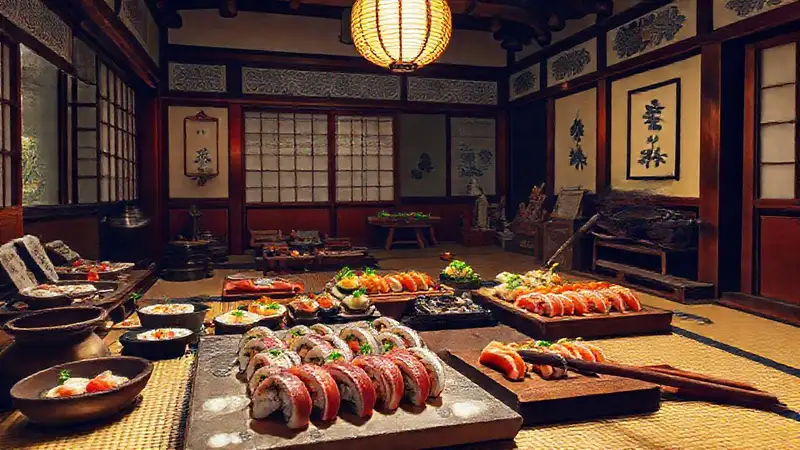 How does Kansai’s art influence the sushi’s appearance
How does Kansai’s art influence the sushi’s appearance What makes Tokyo’s sushi a celebrated art form
What makes Tokyo’s sushi a celebrated art form How does Kansai’s emphasis on balance play out
How does Kansai’s emphasis on balance play out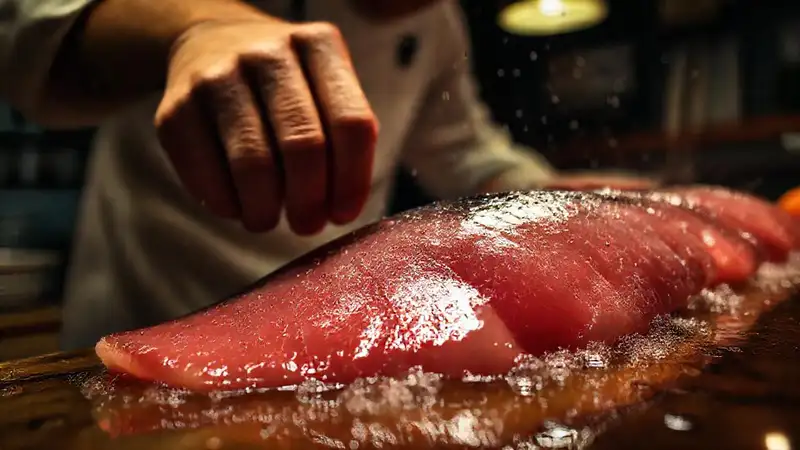
Deja una respuesta